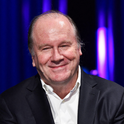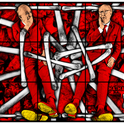Exactly 100 years ago, an Australian director, Charles Tait, made the world's first feature-length film, The Story of the Kelly Gang. Before 1906 there had been short and medium-length films, but nothing approaching 100 minutes, the length we in the west now associate with cinema. Judging by the surviving reactions to it, Tait's 1906 film was no masterpiece, but it had "found" the running time that is now the industry standard, the commercial norm and the duration for which most movie-goers seem willing to escape real life.
The more you think of Tait's feature ideal, however, the less clear it becomes why we have settled on 100 minutes. The first movies were just a few minutes long, shown in circuses or rooms behind shops and aimed at working-class audiences attracted by novelty and quick thrills. Soon canny producers realised that they had to broaden their audience, and so started turning plays and literary subjects into prestige productions with elaborate costumes and name actors. Films became longer to become more middle class.
Duration has long represented prestige. DW Griffith's 1916 film Intolerance ran for over 190 minutes. In 1927 Abel Gance's Napoléon topped it by clocking in at more than five hours. By comparison Gone with the Wind, made in 1939, was a snip at under four hours. B-movies tended to come in at the 70-minute mark while best picture Oscar-winners are often a stately two hours-plus.
The 100-minute standard came about for commercial reasons. Exhibitors like to show a film twice in the evening: at 6 and 8.30pm. Add time for adverts and a quick clean of the auditorium, and you are left with 100 minutes. There is also a vague stylistic reason: three 30-minute acts plus ten minutes of scene setting "feels right," perhaps fitting Aristotle's unity of time.
But you can equally argue the opposite, that there's nothing natural about 100 minutes. At short length—say ten minutes—filmmakers need to be less concerned with sustaining audience interest. As this magazine has demonstrated in its championing of the short story, single-act dramas are more about creating worlds than obviating boredom. The filmmaker or writer is freed to become the architect of a parallel universe, or find a better balance between story, mood and aesthetics.
We tend to meet at cafés for periods of around 40 minutes, so why not have a film industry organised around 30-40 minute blocks rather than 100-120 minute blocks? We could pop in for a 20-30 minute film costing a pound or two, then, refreshed, head out to do other things. The impact, aesthetically, would be enormous. Plot would cease to be the be-all and end-all of commercial cinema. The cinema of sensation—car chases, dinosaurs and the like—would no longer dominate.
If it could work for shorter form filmmaking, what about the longer form? The assumption is that long movies are bad for box office. But even this unravels under scrutiny. In the west, the two most commercially successful movies of all time came in at 194 minutes (Titanic) and 222 minutes (Gone with the Wind). And how long is the average film in the biggest film industry in the world, India's? About three hours. People in India bring food to the cinema, they talk throughout the movie, and expect musical numbers to interrupt the story. Crucial to the business plan of Indian cinema is that people go in large groups. Western cinema's two screenings in one evening isn't the only way to structure a hard-nosed exhibition business.
Long films, paced unlike Hollywood, separate you from the outside world so completely that they slow your heartbeat and sharpen your ability to look at an image. The films of Michelangelo Antonioni in the 1960s and Theo Angelopoulos from the 1970s onwards each insisted that we look at his imagery as we might a Mark Rothko painting, sustainedly, alert to existential as well as narrative content.
But if you rethink 100-minute cinema, there are further possibilities to consider beyond just shorter or longer. Alan Bleasdale's Boys From the Blackstuff (5 x 55 mins) and Adam Curtis's The Century of the Self (4 x 60 mins), showed how well five and four-part mid-length work deals both with unfolding drama and ideas-driven documentary. That they were both made for television should not lead us to believe that cinema has nothing to learn from them. Why can't the movie world offer its work in mid-length triptychs? We have the Lord of the Rings trilogy (combined running times of the special editions, 682 minutes), Krzyzstof Kieslowski's Three Colours trilogy (each a Tait-like 100 minutes or so) and trilogies by the likes of Baz Luhrmann, Abbas Kiarostami and Lars Von Trier. But each of these was designed to be seen as three one-off experiences, years apart. Why doesn't an innovative filmmaker like Mike Figgis make a five-part movie designed to be seen on five consecutive weeks, the story and ideas flowing between each part? Would this not bind audiences into movie-going, just as the Saturday morning serials, with their inevitable cliff-hangers, did in the earlier decades of the movies?












